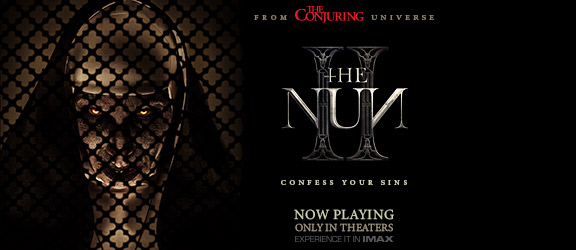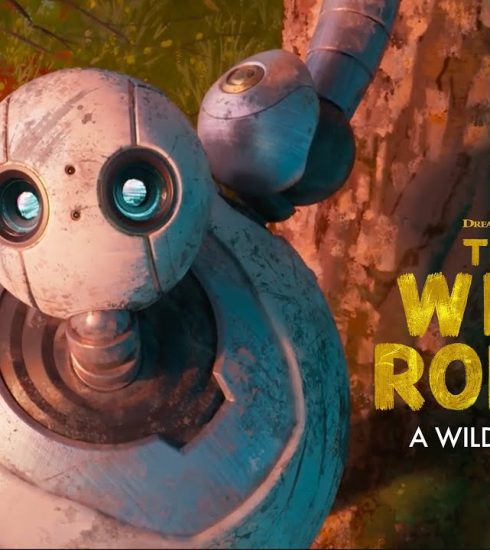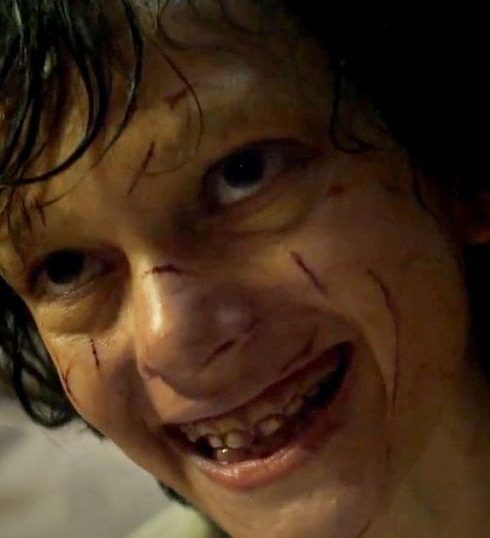Movie Review: The Nun II
Faith and belief drive The Conjuring cinematic universe, which finds its heart and soul in Ed and Lorraine Warren, played by Patrick Wilson and Vera Farmiga. The 2018 spin-off The Nun and its new sequel, The Nun II, have attempted to recreate that magic, right down to casting Vera Farmiga’s look-alike younger sister Taissa in a lead role as a demon-fighting nun. This decision leaves the viewer to search fruitlessly for some narrative thread connecting Taissa Farmiga’s Sister Irene and Vera Farmiga’s Lorraine, but that’s just one of the many goofy choices in this series that makes us question what we’re watching and why.
Early on in The Nun II, Sister Irene tries to convince a sceptic of the power of faith, explaining that believing communion wine is the blood of Christ makes it so. Yet The Nun II is so utterly preposterous that it can’t summon the audience into buying into its own logic and central mythology. This horror movie may only succeed in getting viewers to react to its jump scares rather than creating a relentless mood of dread
or terror, but it’s still a step up from The Nun or director Michael Chaves’s first crack at the franchise, 2019’s The Curse of La Llorona.
Valak, the evil demon that manifests as a sinister nun, was defeated at the end of The Nun by Sister Irene and Father Burke (Demian Bichir) in Romania — or so they thought. The Nun II takes place four years later when mysterious deaths that look like Valak’s handiwork begin appearing throughout Europe, moving westward and catching the attention of Catholic leadership. With her experience fighting demons, Irene is the only one
they trust to fight this evil again, even though she apparently didn’t finish the job the first time. She reluctantly travels to France to investigate, joined by the rebellious Sister Debra (Storm Reid), who is as eager to help her friend as she is to escape the rules imposed upon her by her vows.

The Nun films traffic in blunt terrors rather than atmospheric ones that linger with the audience longer. Yet what sets the sequel apart from the
first film is that those frights actually achieve their aims this time around. The Nun II won’t give hardened horror fans nightmares, but at least it will keep them awake for its running time, while the first film mostly elicited yawns. Valak is impressively creepy when incorporeal,
glimpsed as a shape in the shadows of peeling paint or the turning pages of magazines on a rack.
But after appearing in three movies, Valak is now old news. The demon was far scarier in its initial appearance in The Conjuring 2 than it has been in The Nun or its sequel, especially now that the audience is hip to the franchise’s jump-scaring tricks. Yet despite its increasing familiarity, Valak still manages to unnerve, speaking to the power of the original character design and Bonnie Aarons’s performance. The Nun II never quite reaches the terrifying heights of those early Conjuring films, but it does have more creepy moments than its predecessor.
The Nun II gets enjoyably silly at times, but it takes the proceedings seriously and follows the path you expect, with one absolutely wild exception. There are a few solid jokes throughout the film, and The Nun II briefly toys with interesting ideas, like the overlap between horror and Catholic martyr lore. However, it’s more concerned with providing a few jump scares than digging into anything really disturbing or thought-provoking.
These films also don’t particularly care about historical or geographical settings, which is a shame, given that the series spans decades and continents. While The Nun II is set in 1956 France and was even filmed on location in an abandoned church, that doesn’t inform how the movie is shot, and there’s no real sense of place or time. Everyone speaks English, and there are no details or specificity that might add a sense of realism — or a modicum of care on behalf of the filmmakers.
If you’ve managed to hang around for all eight previous films in the franchise, The Nun II will prove pleasing enough. This entry absolves the spin-offs’ worst sins; it’s sometimes sillier than it is scary, but it’s never as boring as either its direct predecessor or Chaves’s The Curse of La Llorona. A mid-credits scene provides a pointless bit of fan service that’s hardly worth staying around for, but what’s another three minutes when you’ve already put in the work with eight films?
Boluwatife Adesina is a media writer and the helmer of the Downtown Review page. He’s probably in a cinema near you.






